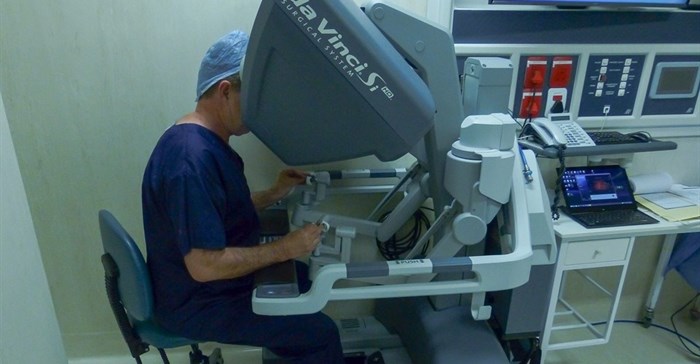As far-fetched as that seemed in the ‘80s, watching minimally-invasive surgery being performed, using the Da Vinci robotic system kind of reminded me of how far we’ve come in terms of technological advances. It literally felt like being inside a person’s body.
At the moment, the system is being used to perform prostatectomies by doctors at Mediclinic Durbanville. Dr Gawie Bruwer has performed more than 85 of these procedures. He explains that the precision of the Da Vinci thoroughly removes cancerous tissue and reduces damage to nerves, which means faster return of erectile function and a better chance at urinary continence for patients.
More than 60% of his patients are discharged the day after their operations. “Robotic surgery lowers the risk of infection and the reduction in blood lose minimises the risk from blood transfusions,” he says.
The system allows a surgeon to operate without physically touching the patient. He sits behind a 10-times magnified 3D console – not unlike a helicopter cockpit complete with joysticks and pedal controls – from where he manipulates pincer-like scalpels - not much bigger than the tip of a ballpoint pen - working in the patient's body.

The other half of the system comprises a four-armed apparatus, which bears a striking resemblance to a mechanical praying mantis. These arms locked onto the patient and hold the little knives, which enter the patient’s body through carefully positioned cannulas. The blades are electrically heated so they cauterise as they go along, meaning minimal bleeding at the site.
The console is ergonomically programmed to identify the different configurations used by different surgeons, and if they turn their head away from the screen – to sneeze for example – the controls freeze until the doctor is back in the correct position.
Also, if the blades need changing, the arms “remember” the last site they were at, so they don’t overshoot the mark and cause damage when they re-enter the body. The movement of the robotic arms inside the body three times smaller than the real movement of the surgeon’s hands on the outside, this removes any tremor he or she may have.
Da Vinci is not just technology suited for urological procedures, but also has been used in nephrology, colo-rectal and gynaecological procedures in other parts of the world.
